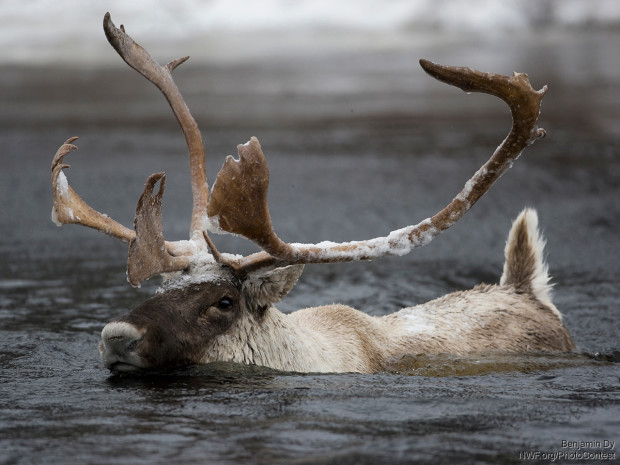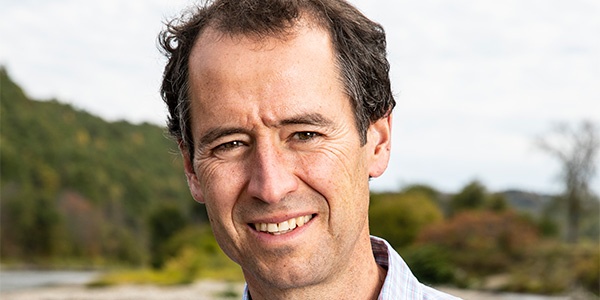We have much more to do and your continued support is needed now more than ever.
President Delivers Tar Sands Wildlife Win, Keystone XL Rejection Next
President Obama took a huge step to help protect wildlife from destructive, climate disrupting tar sands oil. On February 24, he vetoed a fossil fuel industry giveaway bill from Congress that would have forced approval of the ill-conceived Keystone XL pipeline.
The President deserves a huge thank you for standing up for wildlife against irresponsible fossil fuel development.
Keystone XL is a boondoggle project that threatens wildlife every step of the way. In the productive and pristine evergreen forests of Alberta, land is strip mined and drilled, turning a vast migratory bird breeding ground and haven for caribou, wolves, and bear into a poisoned moonscape. Toxic tailings ponds that can be seen from space have killed ducks and other waterfowl by the thousands.
Along the pipeline’s route, the risks to wildlife continue. Sandhill cranes and whooping cranes are threatened by power lines. The pipeline slices through the unique sandhills. And key water resources like the Yellowstone and Missouri Rivers, and the massive Ogallala aquifer, are threatened with type of catastrophic spill that still pollutes the Kalamazoo River more than 4 years after a burst pipe spilled about a million gallons of tar sands into the river.
Threatened and endangered species put at risk include the whooping crane, least tern, piping plover and pallid sturgeon.
The table has now been set to reject the pipeline once and for all. It is now clear that building Keystone will not only directly threaten wildlife from Alberta to the Gulf Coast, but will spew further carbon pollution that will threaten all wildlife with accelerated climate change. This is largely because market forces show that without infrastructure like Keystone XL, the economics of costly tar sands no longer work.

The Environmental Protection Agency Provides New Grounds for Rejection
On February 2, EPA put a final nail in the coffin of this project, finding that:
The Final S[upplemental] E[nvironmental] I[mpact] S[tatement] concluded that at sustained oil prices of $65 to $75 per barrel, the higher transportation costs of shipment by rail “could have a substantial impact on oil sands production levels – possibly in excess of the capacity of the proposed project.” In other words, the Final SEIS found that at sustained oil prices within this range, construction of the pipeline is projected to change the economics of oil sands development and result in increased oil sands production, and the accompanying greenhouse gas emissions, over what would otherwise occur. Given recent large declines in oil prices and the uncertainty of oil price projections, the additional low price scenario included in the Final SEIS should be given additional weight during decision making, due to the potential implications of lower oil prices on project impacts, especially greenhouse gas emissions.
In short, at current oil prices – which are at around $50 per barrel and projected to be low for quite some time – Keystone XL will result in significant carbon pollution.
President Obama has said he will reject Keystone XL if it significantly exacerbates the problem of carbon pollution.
EPA now says it does. And President Obama has already acknowledged that Keystone XL could contribute to disastrous climate change. President Obama now knows Keystone XL fails his test. We are confident he will make his veto win victory a permanent one for wildlife and reject the pipeline outright.

Growing Bi-Partisan Support for Climate Science
And there’s more good news. Another thing we learned from the Congressional debate over Keystone XL is that that a bipartisan majority in the Senate now agrees climate change is real and significantly caused by humans.
This demonstrates a growing recognition that climate science denial will no longer stand with the American public. It also indicates an increasing unease among Washington politicians caught between the big polluter agenda and the consensus of scientists and the American public that climate change is real and we must act. Bi-partisan action cannot come soon enough.
2014 was the hottest year on record, according to both NASA and NOAA. The last 38 years in a row were above the 20th century average, meaning no American born since the Carter administration has lived through a cooler-than-average year globally.
Since the 1970s, each decade has been warmer than the last.
Last year’s National Climate Assessment confirmed that climate change will pose serious threats to wildlife. For instance, as temperatures rise and precipitation patterns change, many fish species (such as salmon, trout, whitefish, and char) will be lost from lower-elevation streams, including a projected loss of 47% of habitat for all trout species in the western U.S. by 2080. And ocean surface waters have become 30% more acidic as they have absorbed large amounts of carbon dioxide from the atmosphere, hurting shell-building organisms like corals, krill, oysters, clams, and crabs and threatening the entire marine food chain.
Time for Solutions
Rejecting Keystone XL marks another pivotal piece in the Administration’s growing efforts to confront climate disruption. This overwhelming scientific consensus drives home why turning away from dirty fuel infrastructure and moving forward with first-ever carbon standards for power plants is the right direction for wildlife.






















